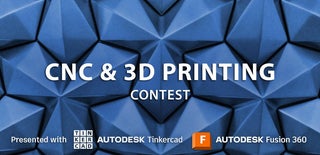Introduction: Carbon Fiber Notebook Cover
I like to have a notebook handy to write down my ideas and sketch out future projects. Having a hard surface to write on is always a plus. So, I replaced my plastic and cardboard covers with 1mm carbon fiber. Now my notebook is its own rigid surface, and it looks super awesome.
This is an entry in the CNC & 3D Printing Contest if you would like to vote for me. Thanks!
Supplies
Autodesk | 3D Design, Engineering & Construction Software
Five Star Personal Spiral Notebook
Grumbacher Watercolor Paper Pad
100W CO2 Laser Engraver Cutter
Protomax
The DXF File is attached in this step.
Attachments
Step 1: Remove Spiral Spring and Measure
I used diagonal cutting pliers to snip off one of the loops for the wire spiral. I set the stack of sheets in a safe place so I wouldn't knock them all over the floor. I then used a tape measure and calipers to get basic dimensions.
Step 2: Design in Fusion 360
I have used several design programs. Fusion 360 is my favorite (paying subscriber). I use it for my 3D printer, laser cutter, CNC milling machine, and water jet cutter.
I made the basic layout with a 5"x7" rectangle. I used the fillet tool to round over the edges, 1/8th of an inch. I also added 3/32" to extend the cover on the long edge. I then placed the first hole of the cover based on my measurements. From there I used the mirror function to reflect the holes all the way down.
I saved the file as a DXF and imported it to my laser cutter for verification.
Step 3: Verify Measurements
Watercolor paper is my "go-to" tool for trial and error. Before I cut the carbon fiber in my waterjet, I cut it out on my laser cutter. It's a good thing I did because the holes were off. Based off my measurements, I ended up with 24 holes while the original cover only had 22 holes.
This is where the rectangular pattern tool in Fusion 360 comes in so handy. I plugged in how many holes I needed and how far apart they should be. The next template lined up perfect. I used my 100-watt laser at 325mm/s at 10% power to make these templates.
Step 4: Water Jet Cutting
There are cutting services you can contract if you don't have access to a water jet. Buying a water jet has been a dream come true for me, but it was a significant investment.
I mounted the carbon fiber on the cutting surface and set the cutting path. I then verified that my path fit within my stock with a dry run. I set the cutting rate by selecting the material and thickness in the cutting program. Once it was cut, I rinsed off all the garnet and dried it off.
Step 5: Remove Tabs
I used the micro snips that came with my 3D printer to cut the covers free. Tiny nubs were left, so I used a small file to file off the remaining protrusions. I also pulled off the protective film and wiped them off with rubbing alcohol.
Step 6: Re-assemble Notebook
This part was sure satisfying. I lined up the front and back covers and ran the spring back through. I then used needle nose pliers to form a new loop to capture the spiral again.
Step 7: Lase Engrave
I probably should have done this before putting the notebook back together, but I was excited to see it. I started by engraving the cover art onto a sheet of watercolor paper. This gave me a reference on where to place the notebook. To offset the height difference from the spiral, I stacked business cards. This allowed the notebook to sit level.
I engraved the carbon fiber on my 100-watt laser at 325mm/s at 10% power. I wiped it all off with rubbing alcohol. The engraving is subtle and shows best when its reflecting at the right angle.
Thank you for checking out my Instructable. Brent

Participated in the
CNC and 3D Printing Contest














